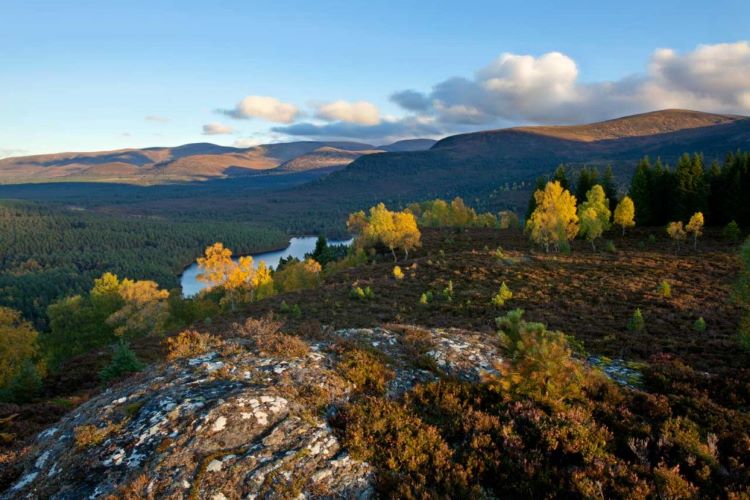The Society of Highland & Island Historical Research (see Soundyngs post 2/3/22) celebrates this year the 50th anniversary of its founding in 1972, and the 100th edition of its journal, West Highland Notes and Queries, just out. This latest edition contains a fascinating article by Keith Sanger, a regular contributor to this forum, on the activities associated with ‘bards’ in early modern Scotland. We learn, inter alia, more about female music-making in this context.
From its inception, the SHIHR (originally known as the Society of West Highland and Island Historical Research) has aimed its material at the general public, and encouraged contributions from informed amateur alongside professional historians, archivists and curators, recognising that the best local history is informed by the diverse voices of local people. Articles in their journal reflect their members’ interests in and knowledge about families and places. As methods in professional historiography change over time, the patterns of person-to-person networks and influences found in these richly anecdotal accounts are ripe for fresh attention. And, for those interested in Gaelic culture and who are not Gaelic speakers (for which a personal apology from this writer), the WHN&Q provides an English-language gateway, opened by people who clearly do have linguistic competence in both tongues.
Sanger’s essay revisits a 1692 letter from Professor James Garden of King’s College Aberdeen which discusses what a ‘bard’ was in Gaelic society of the time, and their hierarchical subdivision into phili mod. filidh (poets), Sheanachin mod. seanchaidhean (narrators of old stories), and Kheahkirin ?mod. ceachdairean? (puzzle makes). This is a source known to historians, which demonstrates an interest in Scottish learned circles in this repertoire many decades before James Macpherson’s Ossianic compilations were published. Using the letter as his starting point, Sanger has gone on to examine household accounts in the Strathspey area, particularly associated with the Grants and the Frasers, for wider evidence of payments to musicians and entertainers in the service of leading families. Intriguingly, the records show that groups of itinerant women (‘avranich’) visited and entertained households by dancing and singing songs written by ‘phili’, possibly accompanied by ‘a violer’ playing a ‘fidle’:
Sanger writes: “Over the period 1637–39 there were 139 payments made to various performers. The clarsairs amounted to 28% of the total, pipers 37%, violers 22% and ‘songsters’ 17%. In addition to the payments to clarsairs, there were two to ‘ane harper’, indicating the presence of a player of the Scottish gut-strung harp, one to a ‘Card’ (ceard) for mending a clarsach and providing strings, and one to ‘ane card’ just for clarsach strings. The ‘songsters’ were mostly unnamed women and were usually in pairs, although on two occasions when male songsters appeared they were named, the first time a ‘Donald Doll’ and the second time a ‘John Sutherland’”. (p.12)
Elsewhere, the article compares Scottish musicians with harpers visiting Scotland from Ireland, and of pipers, both in regular service and occasional visitors. Sanger poses the question, why did the letter not consider harpers as a separate category alongside bards, which might be a more normal pattern from what we know of Irish activity? Why is it the fiddle alone which is usually mentioned in the context of Strathspey bardic (poetic) accompaniment? These are good questions – and the article goes on to explore this at greater length, showing that Scottish “bardic” activity may have been rather different than contemporary Irish equivalents. Payments to Scottish ‘fili’ by the later 17th century seem to expect these to be capable of self-accompanying their poetry on the clarsach, rather than reciting to another player; women might sing, and play, the clarsach; and poems might be accompanied by fiddles/viols.
1660 seems to have been a cultural watershed for much of the activity recorded in the Grant accounts; thereafter, singing women and bards seem to be less common. Although in popular imagination 1745/6 might seem a likely end-point, clearly cultural patterns in Strathspey were already shifting much earlier, probably in response to changing patterns of behaviour and contact with the Scottish Lowlands. In Early Modern Scotland, it is suggested that the viol, or fiddle, gave early chase to the clarsach.
Do read the whole article to learn more – and consider joining the Society of Highland & Island Historical Research (website below) to read more in their journal.
As a whole, the 100th edition contains articles and signposts to lectures on topics as: post-Culloden Highland land, dress and law; the stereotypical representation of Highland inns in Victorian travel writing; Duntrune castle, haunted by a ghostly piper (discussed in a previous edition); Scottish music and dancing enjoyed in emigrant households in 19th century Australia; as well as book reviews on recent publications.
Further reading
- Keith Sanger, “The 1692 Letter to John Aubrey Revisited (1)”, West Highland Notes and Queries 100th issue, series 5(6) (Nov 2022), pp.11-17
- Society of Highland & Island Historical Research website

